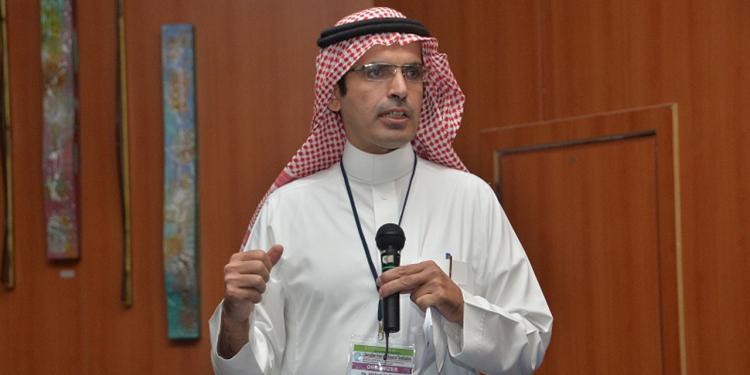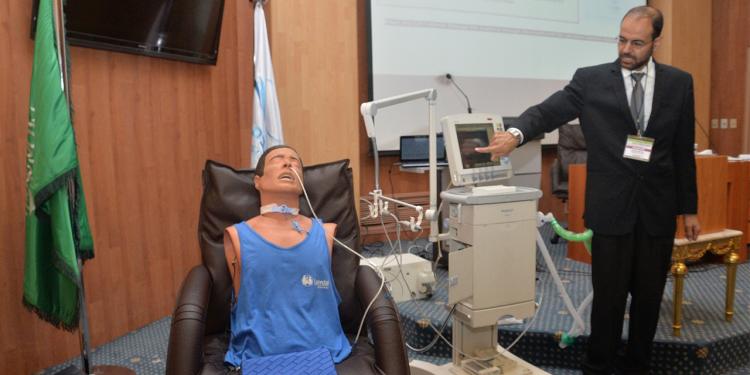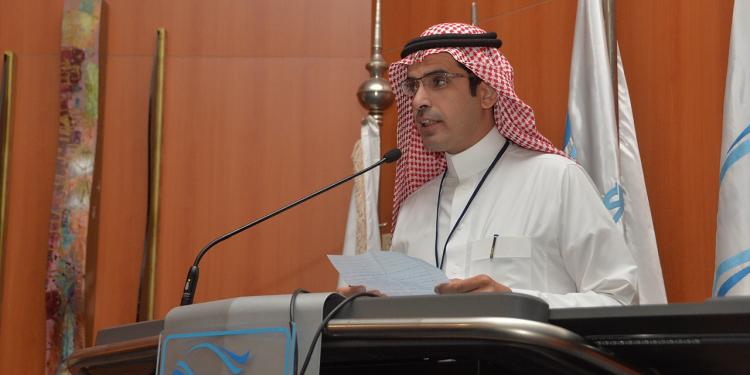The head of the Respiratory Care Department in the College of Applied Medical Sciences in UoD assures that the process of properly removing a disposable respirator from a patient is one of the most important issues that doctors encounter in the ICU. The device is inserted when a patient feels weak and cannot breath, the device is used until the problem is solved.
This speech was during the workshop that was held on Tuesday, April 26, 2016 in building No# 11 in the UoD. The workshop was under the patronage of the President of the University Dr. Abdullah Al Rubaish and attended by the Vice President for Academic Affairs Dr. Ghazi Al Otaibi, a number of respiratory Care specialists and a group of students. The workshop was titled ‘How to Properly Remove a Disposable Respirator’.
Dr. Al Otaibi added that “according to studies that have been conducted around the world and have been published in scientific magazines assure that removing a disposable respirator is considered 40% of all ventilator operations and are directed to free a patient from a disposable respirator. And all researchers continuously work on lowering this percentage as well as that they are working on finding new mechanisms and developed ways to train doctors, specialists and nurses on successful skills of removing a disposable respirator.
He also mentioned that “there have been death cases during disposable respirator removal procedures and if a patient depends on a respirator and the device was removed suddenly the removal process might fail and if the doctor does not return the respirator to its normal position in time a patient might die because doctors rely directly on patients’ bio-indicators but scientists proved that although bio-indicators help they do not confirm that the patient will be freed safely from the respirator. Therefore, the indicators are used as a guideline which means if the breathing rate is less than 30 it means that the patient is stable but these indicators are not fixed or certain and there is not one indicator that confirms that a patient will be freed safely from a respirator device. This is considered a major issue that researchers face and are trying to solve.
Furthermore, a patient will only endure 30 minutes without the respirator device therefore, he/she should be monitored by a medical staff and if the patient progresses during this period then his/her chance of being freed from the device has been achieved but if the patient’s heart or breathing rate rises then this indicates that the patient cannot endure the removal and the device will be returned. Also, there will be no problem if the procedure is done serval times because the device is only a ventilator which consists of a tube that is inserted in the lugs.
Finally, these seminars and workshops organized by the Respiratory Care Department in the College of Applied Medial Sciences in UoD aim at serving the community by providing a scientific subject matter that contributes in strengthening and developing health care and its concepts that serves patients and concerns a large group of health specialists in hospitals.






